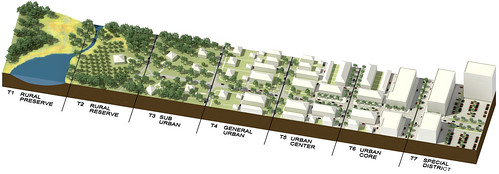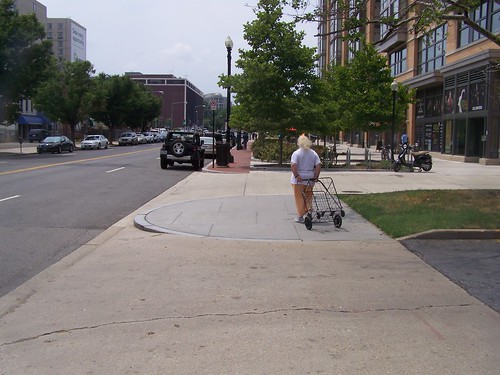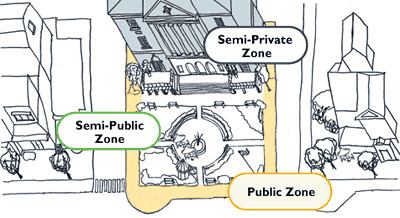The tension in urban sidewalk design between privatized space, public space, and suburbanizing spaces

Sidewalk design schematic. Federal Highway Administration.
SIDEWALK WIDTH (from page 339 of the PEDSAFE: Pedestrian Safety Guide and Countermeasure Selection System)
The width of a sidewalk depends primarily on the number of pedestrians who are expected to use the sidewalk at a given time — high-use sidewalks should be wider than low-use sidewalks. "Street furniture" and sidewalk cafes require extra width, too. A sidewalk width of 1.5 m (5 ft) is needed for two adult pedestrians to comfortably walk side-by-side, and all sidewalks should be constructed to be at least this width. The minimum sidewalk widths for cities large and small are:
Local or collector streets ---- 1.5 m (5 ft)
Arterial or major streets ---- 1.8 to 2.4 m (6 to 8 ft)
CBD areas ---- 2.4 to 3.7 m (8 to 12 ft)*
Along parks, schools, and other major pedestrian generators ---- 2.4 to 3.0 m (8 to 10 ft)
*2.4-m (8-ft) minimum in commercial areas with a planter strip, 3.7-m (12-ft) minimum in commercial areas with no planter strip.
--------------------------------
1. We have to be careful with sustainable sidewalk initiatives in center cities because there is a fine line between suburbanizing the city through setbacks and greening and more traditional urban design.
A way to think about this is to use the transect concept from New Urbanism. In the densest zones, T5 and T6 zones especially, suburban-style treatments should be avoided.

Transect diagram by Topografis PC.
In the city, I expect that sustainable stormwater and related initiatives to come at the expense of street space, not sidewalks, especially in those areas where pedestrian activity is expected to be high.
2. The 400 block of K Street
Is a tradeoff between the ability to move versus seeing greenspace (and the development of sustainable stormwater runoff systems) acceptable?

Sidewalk at CityVista, 400 block of K Street
400 block of K Street

The difference in width in what the Project for Public Spaces calls the public zone in the CityVista part of the block is more pronounced in this photograph, as this pedestrian transitions from the east side of the block to the west.

3. At CityVista, the semi-private zone, the sidewalk immediately abutting the CityVista building, space which also supports commercial activity, has been prioritized at the expense of the "through" sidewalk immediately abutting the street.

Project for Public Spaces diagram.
4. Partly this is a problem of K Street, which has extraordinarily wide setbacks, because L'Enfant planned for K Street to be a main entranceway into the core of the city.
But in the core of the city, sidewalks should be 8 to 12 feet wide at a minimum, to support comfortably the normal amount of pedestrian activity on the street.
There are few if any justifications, in general, or on a project-site basis, for deviations from these minimums.
5. Resources from Project for Public Spaces:
- An Idea Book for Placemaking: Public Zone
- An Idea Book for Placemaking: Semi Public Zone
- An Idea Book for Placemaking: Semi-Private Zone
Labels: green-environment-urban, urban design/placemaking, urban vs. suburban, walking



0 Comments:
Post a Comment
<< Home